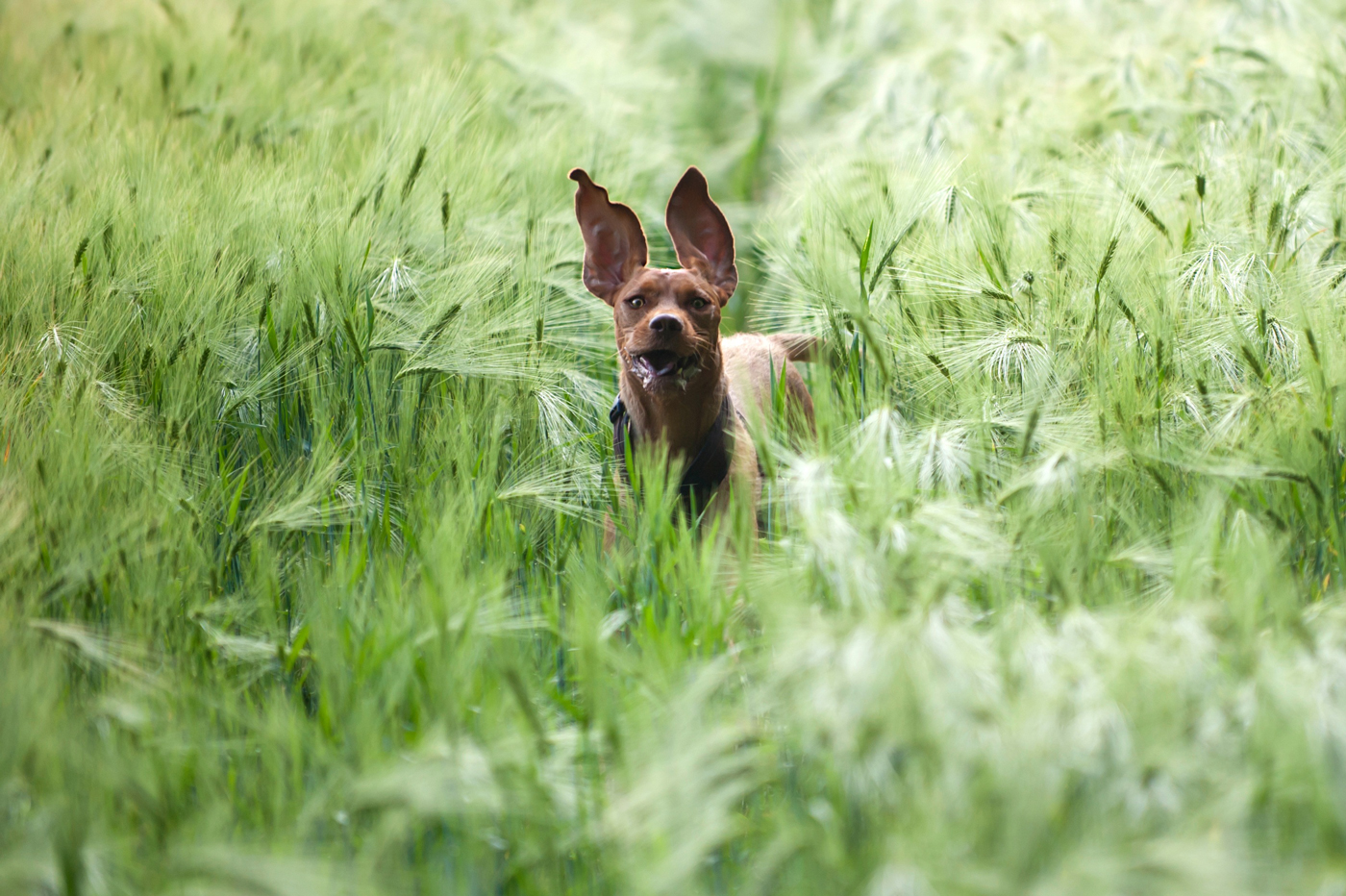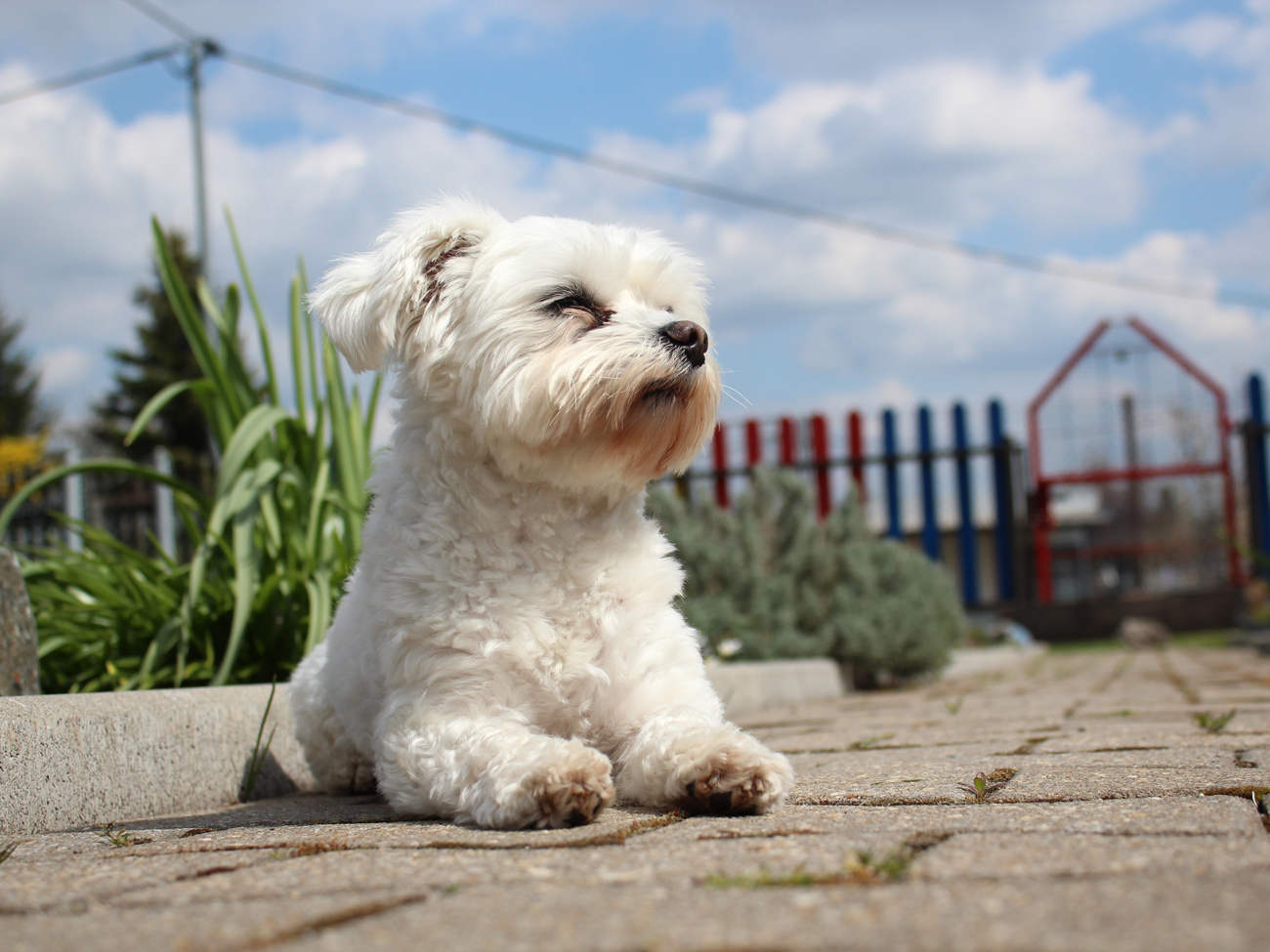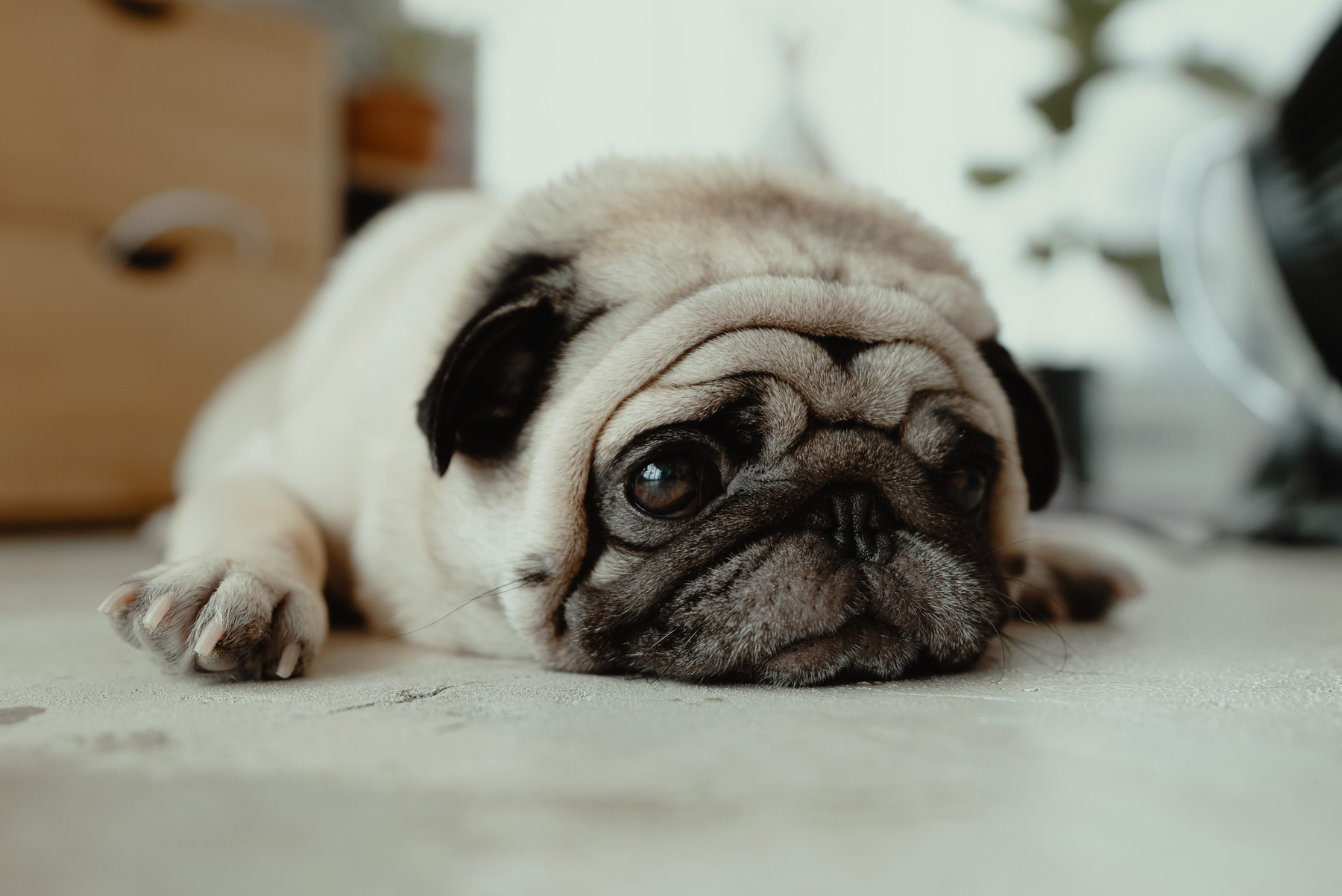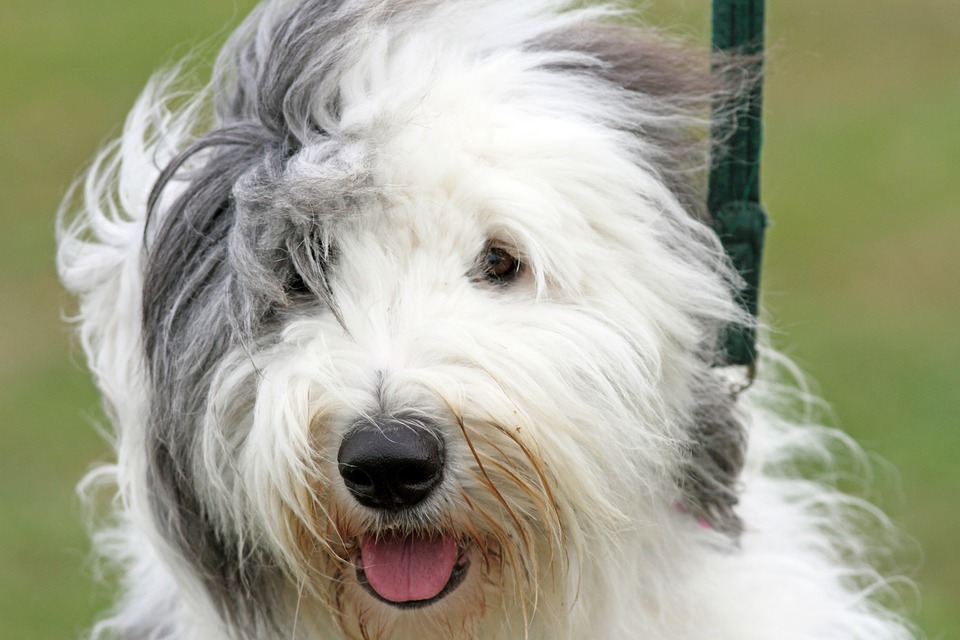Which dogs are the most clingy?
13th January, 2020

One of the best things about canines is the unconditional love they show their owners. But what about when that love becomes a little too overwhelming – both for the owner and the pup?
While you might love your clingy, affectionate pooch, you need to be able to recognise when their adoration is masking an underlying issue, such as lack of confidence or separation anxiety.
A dog that constantly follows you around can seem cute to start with but, after a while, this over-dependence can become frustrating, especially if you have to leave the dog alone for any length of time.
Here at Purely Pets, we want all dogs – clingy or not – to have the proper protection they need, whatever life throws at them.
That’s why our dog insurance covers pups throughout their lifetime for accidents and injuries, and provides you with the flexibility on the price, depending on your budget.
In this article, we’ll identify the breeds that fall into this ‘clingy’ category – breeds otherwise known as ‘Velcro dogs’– and investigate some of the potential problems that come with a particularly clingy pooch.
What are the clingiest dog breeds?
All dogs love spending time with their owners – they’re pack animals after all and thrive when they’re part of a loving, caring family group.
If you’re not keen on constantly being followed around the house, even when you go to the loo, you may want to think carefully before bringing one of these beautiful breeds into your home.
Hungarian Vizsla
The ultimate Velcro dog, the Hungarian Vizsla is the perfect example of a clingy breed. A loyal and loving companion, these dogs are known for following their owners 24/7.
They were originally bred for falconry and are used to staying by their owner’s side at all times… and we mean ALL times! Vizslas can also be prone to separation anxiety if their need for company isn’t met.

Labrador Retriever
A popular breed for families, Labs love playtime, long walks and curling up on the sofa – just as long as you’re there, too! Their attentive nature means they excel at being service or therapy dogs.
Just make sure you have enough time in your busy daily routine to give these pups the attention they need.
Border Collie
Not intent on just following you around the house, Border Collies may even try to herd you, too, but it’s all part of their natural instincts.
That’s why they’ve been a favourite with shepherds for centuries. If you really want an extra shadow, this workaholic breed will follow you wherever you go.
They can be known for being slightly manic, so make sure you have the right dog insurance in place in case they get into any scrapes.
Maltese
A Maltese’s favourite place is right by your side at all times.
They can be prone to whining if they’re left alone for any period of time, so this is definitely not the dog for you if you’re a full-time worker.
Energetic, intelligent and loving, they’re exactly the kind of pup that makes the perfect long-term companion.

Italian Greyhound
Timid and dependent, this miniature version of the greyhound is not a dog that likes being left alone, even for a moment.
They may have lost the height but that hunting instinct is still strong, so long walks are a must for this energetic, playful breed.
Doberman Pinscher
Originally bred as a guard dog, the Doberman Pinscher – especially the miniature version – loves to keep an eye on its owner at all times.
Leave their sight for a few minutes and they will whine and bounce to get your attention firmly back on them.
Loyal and loving but with plenty of energy, these dogs might look mean but they’ll be your best friend for life.
Pug
The pug is a loveable lap dog that’s proved a hit with royalty and celebs alike.
But if you don’t have the time to lavish on your new pup, you might start to see problems.
Separation anxiety can take hold of this breed if they are denied human interaction for long periods of time, so watch out for the telltale signs like whining, destructive chewing or depression.

Great Dane
Don’t be fooled by this gentle giant’s stature. Just because Great Danes are big dogs, it doesn’t mean they want to be outside all the time.
In fact, their favourite place is curled up with – or rather on – you! And this could become a bit of a problem as they can weigh up to 200lbs or 90kg.
Sensitive and protective, you’ll need a big house for this breed, not to mention some big muscles!
What is Velcro Dog syndrome?
Velcro Dog syndrome is a phrase people use to describe the behaviour displayed by clingy breeds.
It is not, however, full-blown separation anxiety and as a responsible pet owner, it’s a good idea to make sure you know the difference.
So-called Velcro dogs will often:
-
Follow you from room to room around the house
-
Try to get as close to you as possible or try to climb up into your lap
-
Anticipate when you might be leaving the room or going out
-
Keep you in their line of sight at all times
Don’t worry just because you have a clingy dog that likes to be with you 24/7 that doesn’t automatically mean that it will develop separation anxiety.
Separation anxiety is a much more serious problem that dog owners should try to avoid at all costs and usually arises when dogs are consistently left alone for extended periods.
Dogs that come from rescue shelters may be more prone to exhibiting this type of behaviour as their previous owners may have abandoned them in the past.
Some of the signs of separation anxiety to watch out for include:
-
Excessively drooling
-
Constantly pacing around the room
-
Trying to escape a room to follow you
-
Howling or barking when you’ve gone
-
Urinating or defecating when you’ve gone
-
Get over excited when you return home
A panicking dog is more prone to accidental injury. That’s why it’s so important to have adequate dog insurance in place.
If your dog does have a accident while they’re trying to reach you, Purely Pets can help.
Our 24-Hour Vet Helpline means you can speak to registered veterinary nurses who can advise you how to treat the dog at home, or if you need to take them to an out-of-hours surgery.

Is this clinginess a new behaviour?
Have you noticed that you pup has been displaying more clingy behaviour of late?
Do they follow you around a lot more or whine incessantly when you leave the house for a couple of minutes?
Consider if anything big has changed in your household in the last few weeks that could have disrupted the normal routine. Let’s take a look at some of the most common culprits as suggested by Pets At Home:
Stress or change
Bonfire night; moving house; time spent at a kennels while you’ve been away on holiday – all of these things are possible causes of fear or stress in canines.
If your pup is prone to worrying, try to identify the cause of their complaints and do what you can to minimize or eradicate the stress. Perhaps you had two dogs and one has just died?
Your pup may be pining for his lost companion if appears more clingy than usual, so you may think about getting another animal to keep them company.
Illness or injury
Has your pup suffered a bout of illness recently?
Feeling out of sorts, or getting over an operation like being neutered or spayed, could be the reason why your pooch is acting more clingy than usual, especially if they’re not one of the known Velcro breeds we’ve mentioned above.
Look for any obvious signs of illness or, if you’ve got dog insurance with Purely Pets, give our 24-Hour Vet Helpline a call to chat through your concerns with a veterinary nurse.
In season
A female dog that hasn’t been spayed might start acting extra clingy when she comes into season. This might be a recognized behaviour and happen every time her season comes around.
If not, check for other stressors or signs of illness. Not planning on breeding from your bitch?
Getting her spayed not only prevents unwanted pregnancies and reduces a number of health issues – it might also solve the clinginess problem, too.
Old age
Older dogs with deteriorating sight or hearing might feel more comfortable in familiar surroundings with their humans close by. Accidents and injuries are much more likely in older dogs.
They can also be less tolerant of children when they’re older, so bear this in mind if you have little ones in the house.
Purely Pets can help you protect your dog from puppyhood to old age. Check out how much you could save on dog insurance today.

How can you help a clingy dog?
We all love cuddling up to our Velcro dogs and feeling that they need us just as much as we need them. But how can you help an overly clingy pup gain a bit more confidence and independence?
Puppy Leaks recommends that you play games that involve distance, so your pup can get used to you being out of sight.
They also suggest making sure your pup knows exactly where his ‘safe space’ or bed is and giving them Kong toys that require a lot of concentration in order to get the treat.
How to encourage independence in your pup
Even though it might get a little frustrating at times, punishing a dog for being clingy is not the answer. They won’t understand that following you around is a bad thing.
Equally, if they are destructive when you go out, punishing them when you come home won’t help. Reprimanding them ‘in the moment’, not after the fact, is the only way to get the message across.
Spend time working on promoting good behaviour and building your pup’s confidence for being left alone.
Bear in mind, though, that leaving any puppy alone all day is not a good idea.
Dogs Trust recommend that you leave dogs for no longer than four hours at any one time, not least because they will need to toilet at some point during those hours.
The RSPCA has this training advice for encouraging confidence in your pup when you’re not around:
-
Tell your pup to go to its bed and reward them for staying there for a short time.
-
Tell the dog to stay where it is while you slowly walk away. Give them a reward if they manage to stay put.
-
Repeat the routine, moving further and further away, for slightly longer periods of time, but still stay in the room. If they manage to stay, reward them. If not, don’t punish or shout at them but withhold the reward.
-
Once your dog has mastered step 3, start leaving the room and shut the door behind you as you go. Mix up the amount of time you spend outside. Again, if the dog stays put, give him a treat.
Remember to always make sure your dog has been properly exercised and fed before you leave them on their own.
That way, they’ll be more likely to settle down and not react negatively when you leave the room.
Dog insurance that can be tailored to suit your budget
Here at Purely Pets, we understand how much your mutt means to you. Sometimes it can be hard to tell the difference between a Velcro Dog who loves being with its owner and a pup that’s suffering from severe separation anxiety.
That’s where we can help. We know that you want to protect your pooch with specialist dog insurance so we make things simple.
As well as lifetime policies with cover for vets’ fees from £1,000 to £15,000 and the ability to manage your policy documents online, we also have a 24-Hour Vet Helpline that you can call with any doggy-related worries.
Get a quote for dog insurance today.
Helpful Pages
Recent Posts
Pet Insurance Quote
- 98% claims paid *
- Claims paid directly to vets
- 24/7 vet video consultations
- Interest free monthly payments




